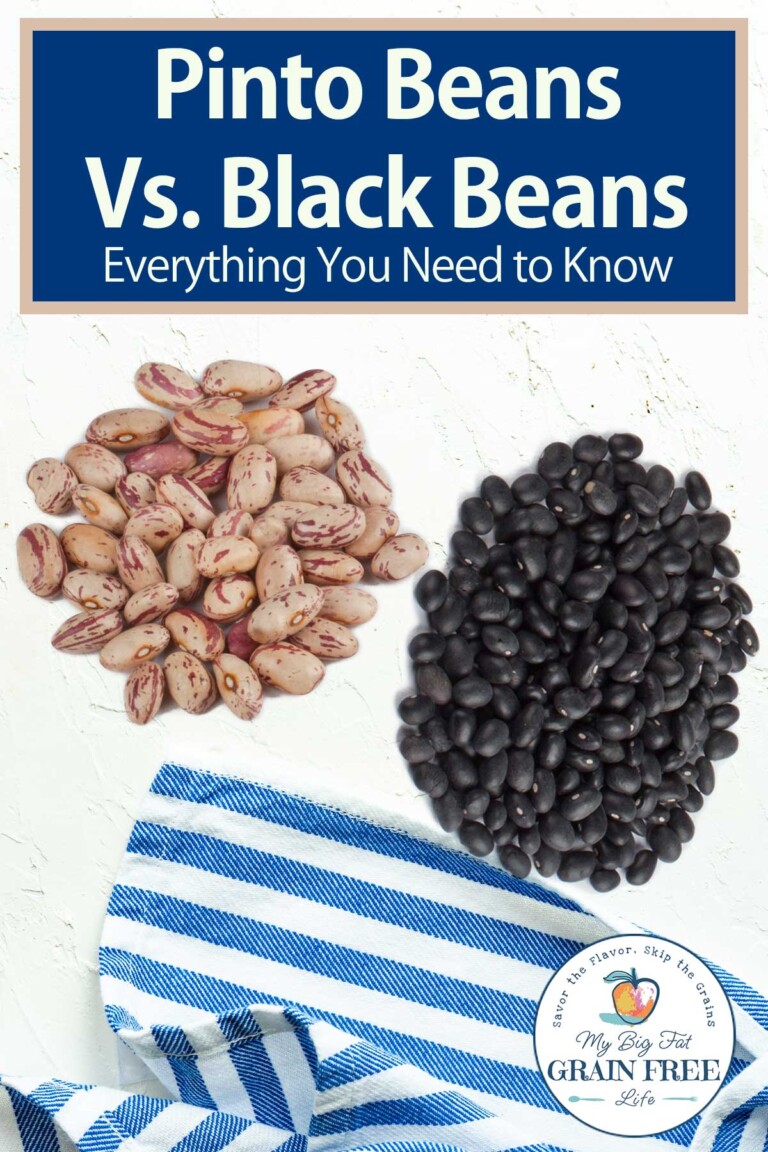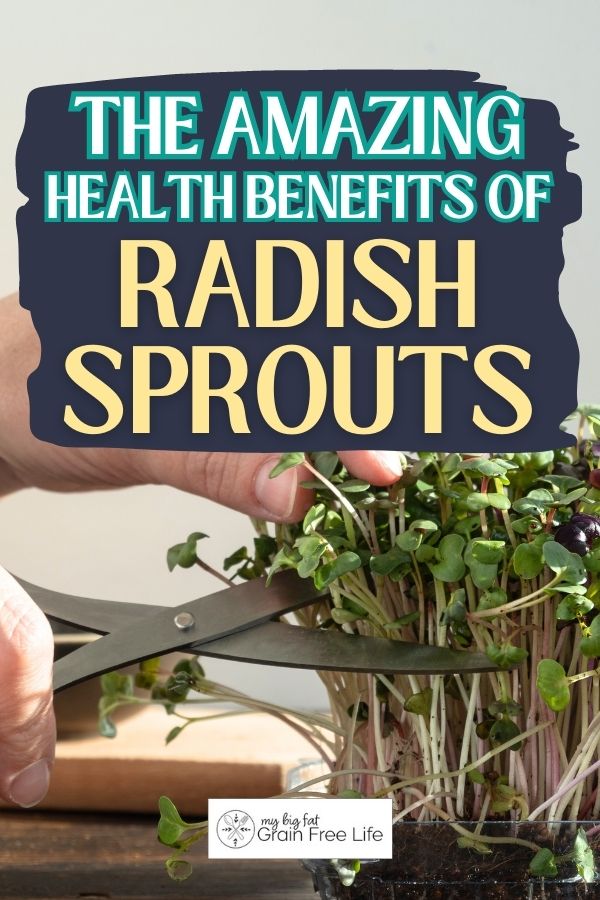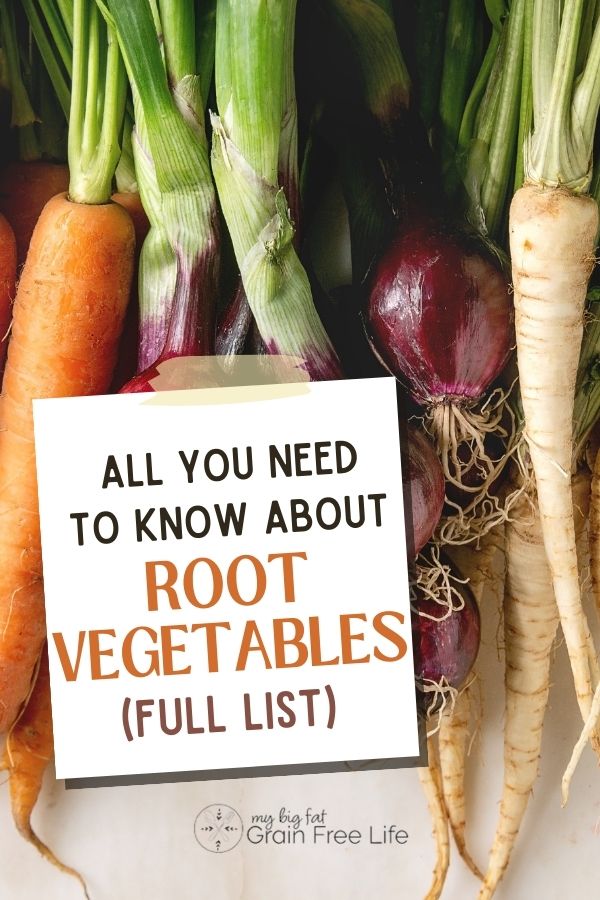40+ List of Green Leafy Vegetables to Add to Your Diet
This post may contain affiliate links. If you make purchase after clicking a link, I may receive a commission at no extra cost to you.
Last Updated on September 6, 2023
We’ve compiled the ultimate green leafy vegetables list for you so you can see if there are any you haven’t tried yet. Loaded with vitamins and minerals, adding leafy green vegetables to your diet can help you get all the nutrition you need.

Leafy Green Vegetables
If you are a health-conscious individual, you likely already know the benefits of adding cruciferous vegetables and leafy greens to your diet. What you may not have realized though, is that there are so many different varieties of leafy green vegetables.
We’ll go over the list of green leafy vegetables in a minute, but first, let’s take a look at what leafy greens are and the health benefits of adding them to your diet.
What Are Leafy Greens?
Leafy greens are a group of nutrient-packed vegetables that are characterized by their dark green leaves.
These green leafy veggies are not only delicious but also incredibly nutritious, and even considered a superfood! Packed with vitamins, minerals, and dietary fiber, they offer numerous health benefits. Incorporating leafy greens into your diet can help improve digestion, boost immune function, and support overall well-being.
There are other greens that are often not considered, such as the green leaves on top of root vegetables, such as carrot leaves and leaves from fruiting trees. For instance, there are many health benefits of fig leaves, did you know that?
You might also want to check out: Complete Guide on Greens: Collards, Mustards & Turnip Greens
15 Health Benefits of Leafy Greens
These powerhouse veggies pack a punch when it comes to nourishing your body. Here are 15 important health benefits of eating leafy green vegetables:
1. Nutrient Powerhouses: Leafy greens are packed with essential vitamins, minerals, and antioxidants that support overall health and well-being.
2. Heart Health: Regular consumption of leafy greens has been linked to a reduced risk of heart disease, thanks to their high fiber content and ability to lower cholesterol levels.
3. Weight Management: These veggies are low in calories but high in fiber, helping you feel fuller for longer and aiding in weight loss or maintenance.
4. Bone Strength: Leafy greens are rich in calcium and vitamin K, both of which are crucial for maintaining strong bones and preventing osteoporosis.
5. Skin Glow: The abundance of antioxidants in leafy greens can enhance your skin’s health and give you a natural, radiant glow.
6. Digestive Health: The fiber content in leafy greens promotes healthy digestion, preventing constipation and supporting a balanced gut.
7. High Blood Pressure Regulation: Potassium, found in leafy greens, helps regulate blood pressure levels, reducing the risk of hypertension.
8. Eye Health: Leafy greens contain lutein and zeaxanthin, antioxidants that protect the eyes from age-related macular degeneration and cataracts.
9. Cancer Prevention: The presence of phytochemicals such as quercetin and antioxidants in leafy greens may help lower the risk of certain types of cancer, including breast, prostate, and colon cancer.
10. Anti-Inflammatory Properties: The high concentration of antioxidants in leafy greens can help reduce inflammation in the body, which is beneficial for managing chronic diseases.
11. Brain Health: Leafy greens are rich in folate, a B-vitamin that supports brain function and may reduce the risk of Alzheimer’s disease.
12. Immune System Boost: The vitamins and minerals in leafy greens, such as vitamin C and iron, help strengthen the immune system, keeping you healthy and less prone to illnesses.
13. Diabetes Management: Leafy greens have a low glycemic index and can help regulate blood sugar levels, making them suitable for individuals with diabetes.
14. Mood Enhancement: The high folate content in leafy greens has been linked to improved mood and a reduced risk of depression.
15. Longevity: Studies have shown that a diet rich in leafy greens is associated with a longer lifespan, likely due to their numerous health benefits.
Green Leafy Vegetables List
There are many green leafy vegetables that you can benefit from eating. Each has its own flavor profile, some crisp and earthy, and others more sweet, tart, lemony, or bitter.
You can further enhance these flavorful notes by eating leafy greens with olive oil and various types of vinegar such as balsamic, apple cider vinegar, and even some delicious fruit vinegars. Toppings can be simple like red onion, cucamelons, kalamata olives, etc.
Arugula
Arugula, also known as rocket, is a leafy green that adds a peppery and slightly bitter flavor to dishes. You’ll find it on the cruciferous vegetables list. The health benefits of arugula are quite amazing. It’s a great source of vitamins A, C, and K, as well as folate and calcium.
Its distinct taste makes it perfect for salads, sandwiches, and even pesto. Personally, I love making a salad with arugula and shredded chicken. It’s sooo good!

Kale
Kale has gained popularity for being one of the most nutrient-dense foods available. Its leaves have a slightly earthy and bitter taste. Packed with vitamins A, C, and K, kale also provides a good amount of fiber and antioxidants.
Use it in salads, smoothies, or sauté it as a nutritious side dish. It’s also extremely healthy when made into kale juice.
Check it out: Delicious & Hearty Kale and White Bean Soup

Bok Choy
Bok choy, a type of Chinese cabbage, has tender leaves and crunchy stalks. You can find bok choy fully mature or use it as baby bok choy. It has a mild, slightly sweet flavor with a hint of bitterness. This leafy green is rich in vitamins A, C, and K, as well as calcium and iron.
It is commonly used in stir-fries, soups, and Asian-inspired dishes.
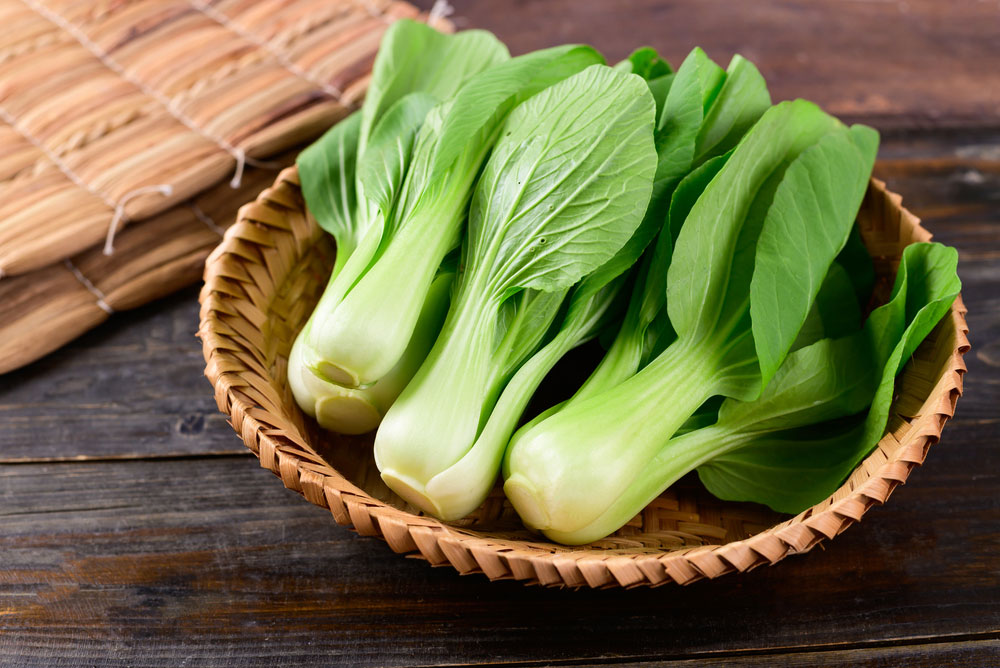
Microgreens
Microgreens are young vegetable greens that are harvested when they are just a few inches tall. They come in a variety of flavors, including mild and spicy options. Despite their small size, microgreens are packed with nutrients and can contain up to 40 times more vitamins and minerals than their mature counterparts.
They make a great addition to salads, sandwiches, and garnishes.

Spinach
Spinach is a versatile and nutrient-dense leafy green with a mild and slightly earthy taste. It is an excellent source of vitamins A, C, and K, as well as iron and folate. Spinach can be enjoyed raw in salads, sautéed as a side dish, or blended to enhance the health benefits of smoothies. There are a ton of health benefits of spinach juice, so consider juicing it too!

Malabar Spinach
Malabar spinach is a tropical leafy green with thick and fleshy leaves. It has a mild, slightly tangy taste. This green is a good source of vitamins A and C, as well as iron and calcium. It is often used in stir-fries, curries, and soups.
I grew malabar spinach in my garden last year and some of the leaves were as big as my head!

Turnip Greens
Turnip greens are the leafy tops of turnips, a type of tuber vegetable. They have a slightly bitter and peppery taste. These greens are packed with vitamins A, C, and K, as well as calcium and fiber. They can be cooked or sautéed as a flavorful side dish or added to soups and stews.
Also see: Turnip Vs Rutabaga (the greens of both can be used!)
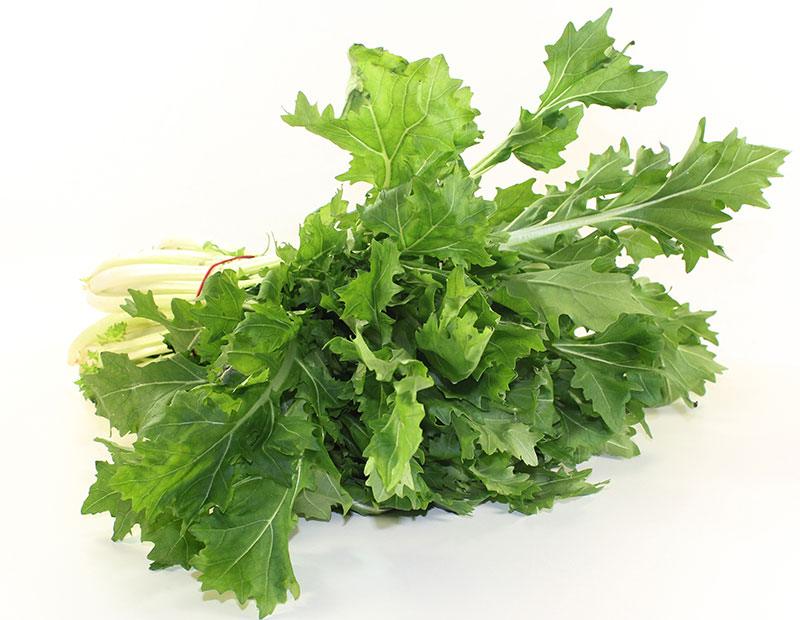
Collard Greens
Collard greens have thick, hearty leaves with a slightly bitter and earthy taste. They are high in vitamins A, C, and K, as well as calcium and fiber.
Collard greens are commonly used in Southern cuisine, where they are simmered until tender or sautéed with other ingredients.

Mustard Greens
Mustard greens have a bold and peppery flavor with a hint of spiciness. They are rich in vitamins A, C, and K, as well as calcium and iron. Mustard greens can be enjoyed raw in salads or cooked in stir-fries, soups, and stews.
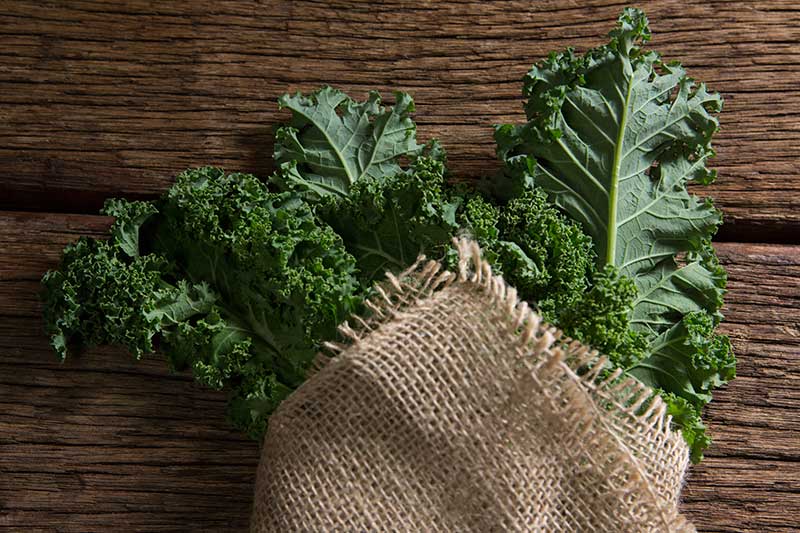
Swiss Chard
Swiss chard has large, tender leaves with a slightly bitter and earthy taste. It is an excellent source of vitamins A, C, and K, as well as magnesium and potassium. Swiss chard can be cooked, sautéed, or used as a substitute for spinach in various recipes.
This Swiss chard recipe is delicious and makes a great side dish.

Rainbow Chard
Rainbow chard, also known as red or green chard, is a colorful leafy green with a mild and slightly bitter taste. It is packed with vitamins A, C, and K, as well as iron and fiber. Rainbow chard can be used in salads, sautéed as a side dish, or added to soups and stews.
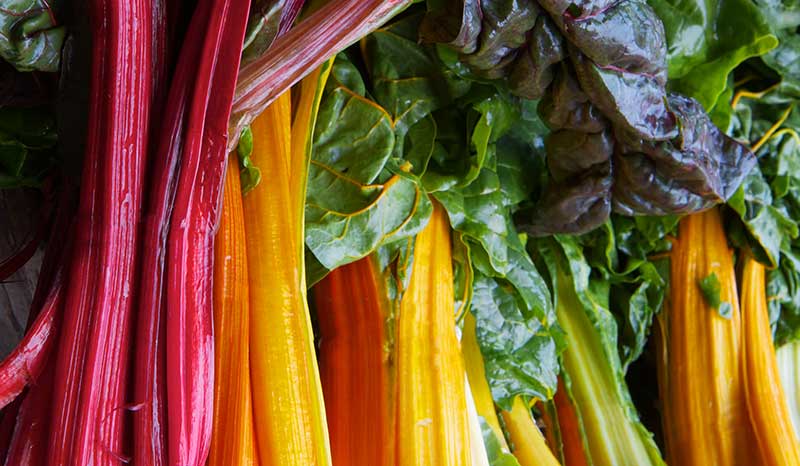
Cabbage
Cabbage is a versatile cruciferous vegetable with crisp leaves and a slightly sweet and peppery taste. It is an excellent source of vitamins C and K, as well as fiber and antioxidants. Cabbage can be enjoyed raw in salads, fermented as sauerkraut, or cooked in stir-fries and my favorite, beef and cabbage soup.
There are different varieties of cabbage. For instance, there are a lot of health benefits of red cabbage.

Napa Cabbage
Napa cabbage, also known as Chinese cabbage, has tender and mild-flavored leaves. It is rich in vitamins C and K, as well as potassium and fiber. Napa cabbage is commonly used in Asian cuisine, including stir-fries, kimchi, and salads.
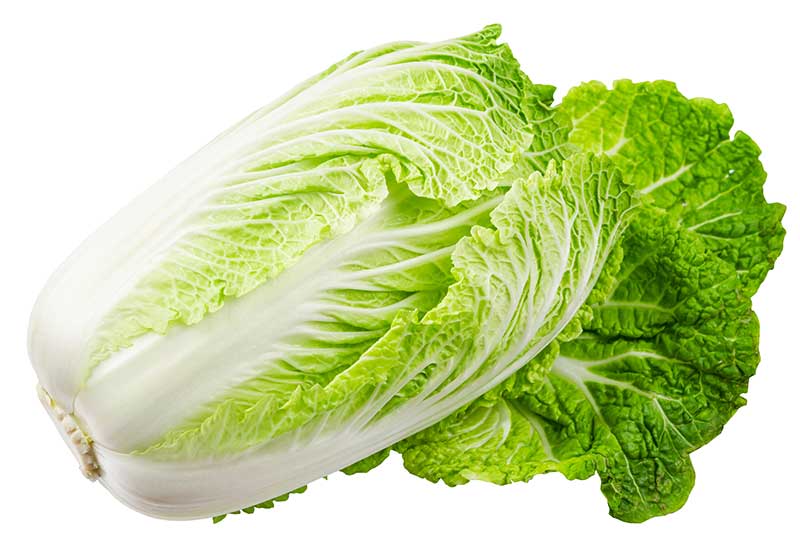
Sorrel
Sorrel is a leafy green with a tart and lemony flavor. It is high in vitamins A and C, as well as potassium and magnesium. Sorrel can be used in salads, sauces, soups, and even as a tangy garnish.
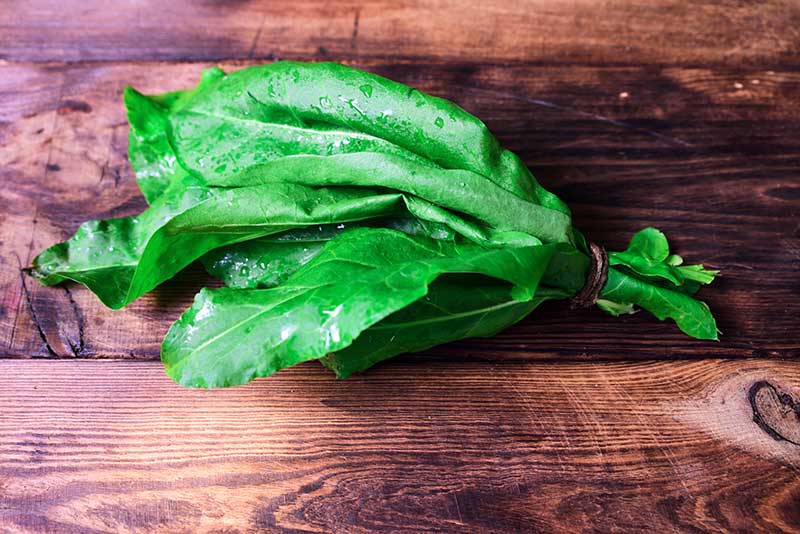
Escarole
Escarole is a leafy green with broad, curly leaves and a slightly bitter taste. It is a good source of vitamins A and C, as well as fiber and folate. Escarole can be enjoyed raw in salads or cooked in soups, stews, and sautés.
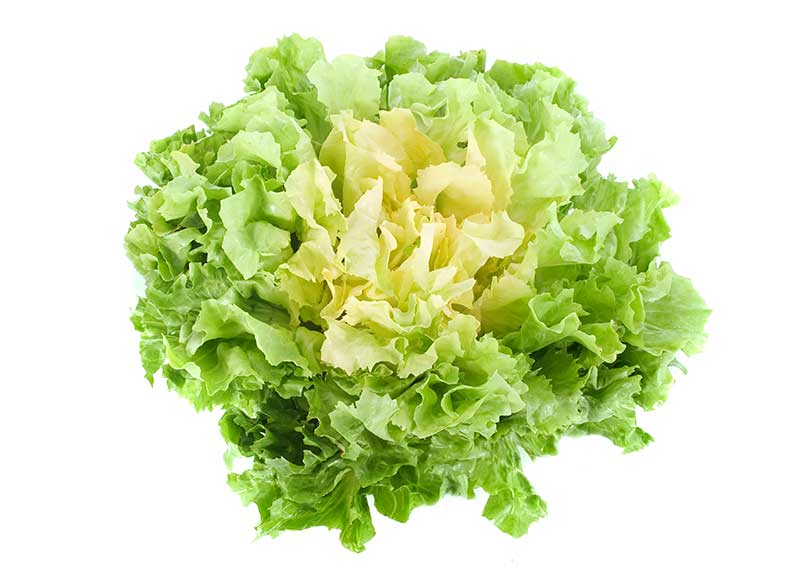
Rapini
Rapini, also known as broccoli rabe, has tender leaves and small florets with a slightly bitter taste. It is rich in vitamins A, C, and K, as well as calcium and iron. Rapini is commonly used in Italian cuisine, where it is sautéed, steamed, or added to pasta dishes.

Beet Greens
Beet greens are the leafy tops of beetroot plants. They have a mild, earthy flavor and are rich in vitamins A and K, as well as calcium and iron. The health benefits of beetroot leaves is quite astounding.
Beet greens can be cooked or sautéed as a nutritious side dish or added to salads and soups.

Kohlrabi Greens
Kohlrabi greens are the leafy greens attached to the kohlrabi vegetable. They have a mild, slightly bitter taste. These greens are high in vitamins A and C, as well as calcium and fiber. Kohlrabi greens can be cooked or used in salads and stir-fries.
Green Leafy Vegetables List
Can you believe how many green leafy vegetables there are for you to add to your diet? We’re not done yet, so keep reading!
Frisée
Frisée, also known as curly endive, is a leafy green with frilly and slightly bitter leaves. It adds a unique texture and flavor to salads and can also be cooked. Frisée is a good source of vitamins A and C, as well as folate and fiber.
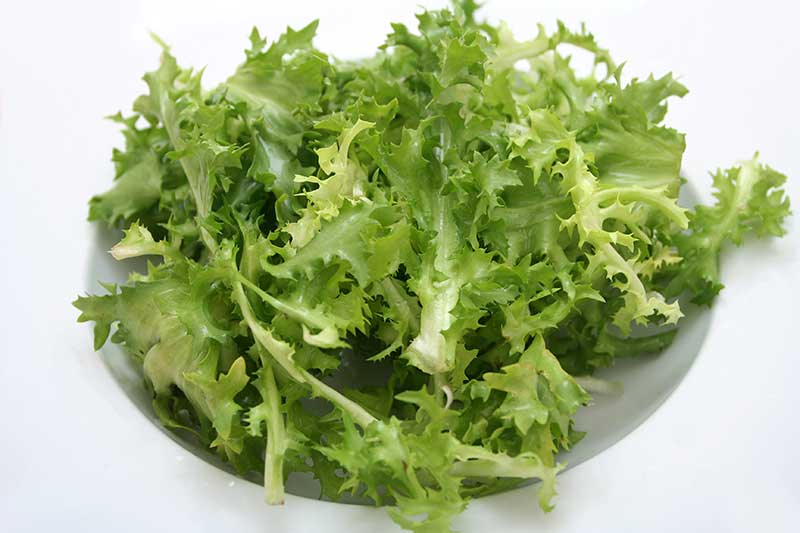
Mesclun
Mesclun is a mix of young salad greens that can include various lettuces, herbs, and other leafy greens. It offers a range of flavors, from mild to spicy and slightly bitter. Mesclun is a nutrient-dense option, providing vitamins A, C, and K, as well as folate and fiber. It is commonly used as a base for salads.
Watercress
Watercress is a leafy green with a peppery and slightly bitter taste. It is loaded with vitamins A, C, and K, as well as calcium and iron. Watercress can be enjoyed raw in salads, added to sandwiches, or used in soups and sauces.
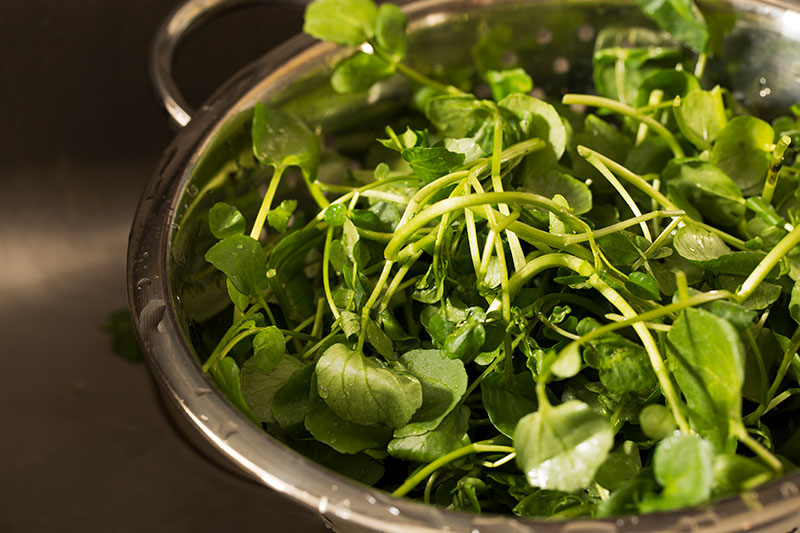
Chrysanthemum Greens
Chrysanthemum greens, also known as crown daisy or edible chrysanthemum, have tender leaves with a slightly bitter and herbaceous taste. They are rich in vitamins A and C, as well as calcium and iron.
Chrysanthemum greens are commonly used in Asian cuisine, including stir-fries, soups, and hot pots.
Endive
Endive is a leafy green with crisp leaves and a slightly bitter taste. It is a good source of vitamins A, C, and K, as well as calcium and fiber. Endive can be enjoyed raw in salads, used as a vessel for appetizers, or cooked in various dishes.

Radish Greens
Radish greens are the leafy tops of radish plants. They have a slightly peppery and tangy taste. The health benefits of radish sprouts are huge! These greens are packed with vitamins A, C, and K, as well as calcium and iron.
Radish greens can be cooked or used in salads, pesto, and sautés.

Chicory Greens
Chicory greens have a slightly bitter and nutty taste. They are rich in vitamins A and C, as well as calcium and potassium. Chicory greens can be enjoyed raw in salads, cooked as a side dish, or used in soups and stews.
You might be familiar with chicory in the form of chicory coffee, which is made with the roots of the chicory plant.

Dandelion Greens
Dandelion greens have a slightly bitter taste with a hint of sweetness. They are loaded with vitamins A, C, and K, as well as calcium and iron. Dandelion greens can be used in salads, sautéed as a side dish, or added to smoothies and juices. Roasted dandelion root is a popular type of herbal tea.
Broccoleaf
Broccoleaf, as the name suggests, is the leafy green part of the broccoli plant. It has a mild and slightly bitter taste. Broccoleaf is a good source of vitamins A, C, and K, as well as calcium and fiber. It can be used in salads, stir-fries, or cooked as a nutritious side dish.
Purslane
Purslane is a leafy green with a slightly tangy and lemony taste. It is rich in vitamins A, C, and E, as well as omega-3 fatty acids. Purslane can be enjoyed raw in salads, sautéed, or used in soups and stews.

Green Leafy Vegetables: Types of Lettuce
There are many different types of leafy green lettuce that help make salads amazing. Here are the various types of lettuce that fall under the leafy green vegetables list.
Romaine Lettuce
Romaine lettuce is known for its crisp texture and slightly bitter taste. Its sturdy leaves make it a popular choice for Caesar salads and lettuce wraps. This lettuce variety is rich in vitamins A, C, and K, providing essential nutrients for healthy skin, immune function, and bone health.

Iceberg Lettuce
Crisp and refreshing, iceberg lettuce is a popular choice for salads and sandwiches. With its mild flavor and crunchy texture, it adds a delightful crunch to any dish. While not as nutrient-dense as other lettuce varieties, Iceberg Lettuce is still a good source of vitamins A and K.
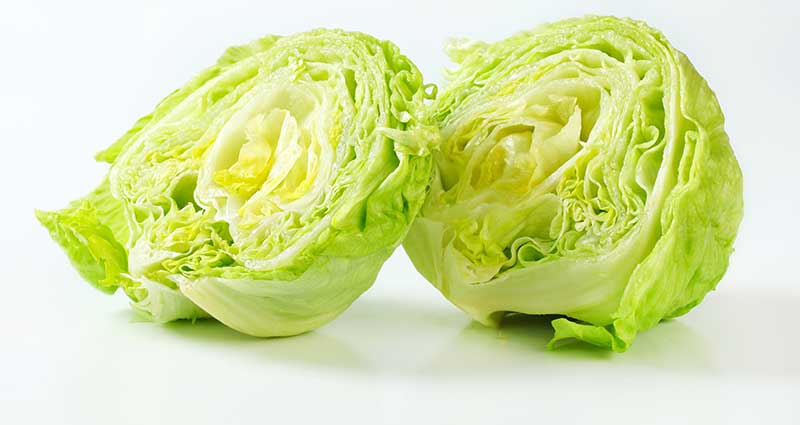
Bibb Lettuce
Known for its delicate and buttery texture, bibb lettuce offers a mild and slightly sweet taste. Its tender leaves make it perfect for salads or as a wrap for fillings. This lettuce variety is rich in vitamins A and C, providing a boost of antioxidants to support a healthy immune system.

Batavia Lettuce
With a slightly bitter and robust flavor, Batavia lettuce adds a unique twist to salads and sandwiches. Its crispy and crunchy leaves provide a satisfying texture. Packed with vitamins A, C, and K, Batavia lettuce is a nutritious choice that supports bone health and helps maintain healthy skin.
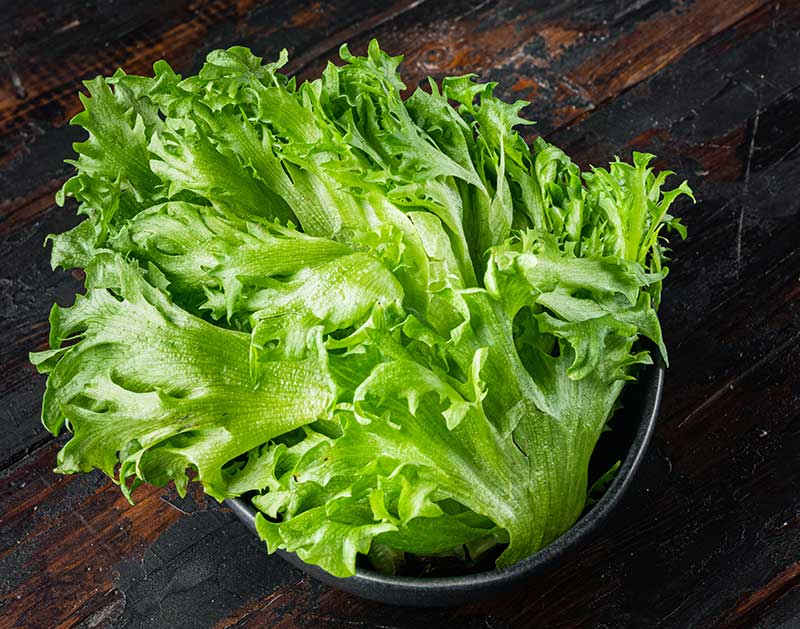
Boston Lettuce
Also known as butterhead lettuce, Boston lettuce boasts soft, tender leaves and a sweet, mild flavor. Its delicate texture makes it ideal for salads and sandwiches. This lettuce variety is a good source of vitamins A and K, contributing to healthy vision and strong bones.
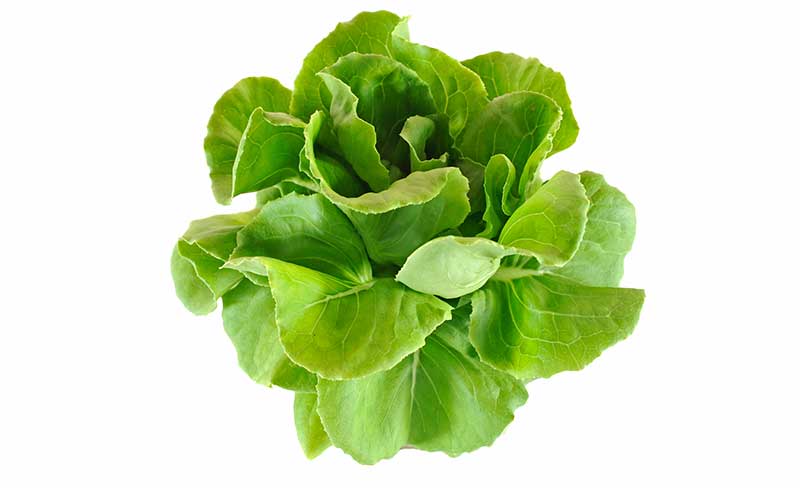
Leaf Lettuce
Leaf lettuce comes in various colors and shapes, including green, red, and oakleaf. It has a mild and slightly nutty taste. Its loose and delicate leaves are perfect for salads and wraps. Rich in vitamins A and K, leaf lettuce offers antioxidant properties and supports bone health.
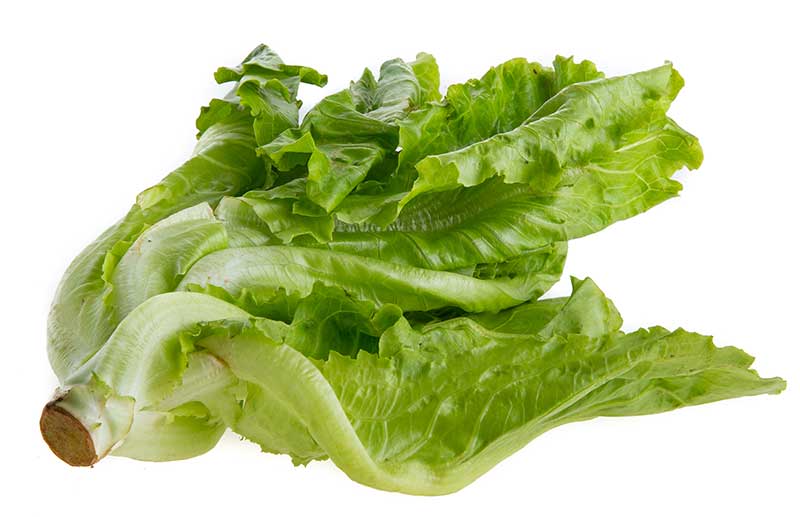
Coral Lettuce
With its frilly and vibrant leaves, coral lettuce adds a touch of elegance to any dish. It boasts a mild and slightly bitter taste, making it a versatile choice for salads and garnishes. This lettuce variety is a good source of vitamins A and C, promoting healthy skin and a strong immune system.

Butterhead Lettuce
Known for its soft, buttery leaves, butterhead lettuce offers a mild and slightly sweet flavor. Its tender leaves are perfect for salads and sandwiches. Packed with vitamins A and K, butterhead lettuce supports eye health and aids in blood clotting.

Oakleaf Lettuce
With its distinctive lobed leaves, oakleaf lettuce offers a mild and slightly nutty taste. Its tender and delicate leaves are perfect for salads and wraps. This lettuce variety is rich in vitamins A and C, providing antioxidants that help protect against cell damage.
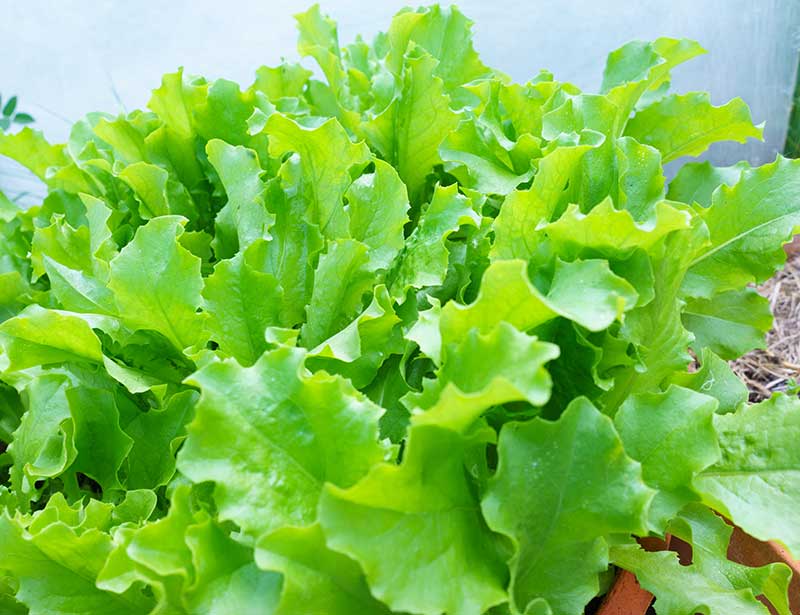
Little Gem Lettuce
Little gem lettuce is a miniature version of romaine lettuce, offering a similar taste but with a more compact size. It has a crisp texture and a slightly sweet flavor. This lettuce variety is a good source of vitamins A and K, contributing to healthy vision and bone strength.

Mâche
Also known as lamb’s lettuce or corn salad, mâche has small, tender leaves with a mild and nutty flavor. Its delicate texture makes it perfect for salads and garnishes. Rich in vitamins A and C, mâche provides antioxidants that support a healthy immune system.
How to Clean and Store Leafy Green Vegetables
When it comes to cleaning and storing leafy green vegetables, there are a few simple steps to ensure their freshness and longevity.
1.) First, start by rinsing the greens thoroughly under cool running water to remove any dirt or debris. For delicate leaves, gently pat them dry with a clean towel or use a salad spinner for larger quantities.
2.) Next, trim any wilted or damaged parts of the leaves.
3.) To store, place the greens in a resealable plastic bag or an airtight container lined with a paper towel to absorb excess moisture.
4.) Lastly, refrigerate the greens in the crisper drawer, ideally at a temperature between 32-40°F (0-4°C).
When considering fresh vs frozen vegetables, leafy greens aren’t ones you’d want to freeze, unless you plan to just toss them into soups or smoothies.
By following these easy steps, you’ll keep your leafy green vegetables fresh and ready to enjoy in your meals!

Ways to Eat Leafy Greens
Here are 10 ways to enjoy eating leafy green vegetables:
- Whip up a refreshing salad: Toss together a mix of greens like spinach, arugula, and kale with your favorite veggies, nuts, and vinaigrette for a crunchy and nutritious meal. Consider boosting the health benefits with lemon seeds (crush them and add to salad dressings).
- Sauté them with garlic: Heat some olive oil in a pan, add minced garlic, and sauté your greens until they wilt slightly. Season with salt and pepper for a simple yet delicious side dish.
- Blend them into smoothies: Add a handful of greens like spinach or kale to your favorite fruit smoothie for an extra boost of vitamins and minerals.
- Create flavorful wraps: Use large lettuce leaves as a substitute for tortillas or bread to make light and refreshing wraps filled with your favorite protein and veggies.
- Roast them to perfection: Drizzle olive oil over your greens, sprinkle with salt and pepper, and roast them in the oven until they become crispy and delicious.
- Make a hearty soup: Add leafy greens like Swiss chard or collard greens to your homemade soups for added texture, flavor, and nutrition.
- Stuff them in omelettes: Sauté your greens before adding them to your omelette mixture, along with other fillings like cheese, mushrooms, or tomatoes.
- Create a delicious stir-fry: Toss your greens into a sizzling wok with some coconut aminios, garlic, and your favorite vegetables for a quick and tasty stir-fry.
- Try them in pasta dishes: Add chopped spinach or kale to your pasta sauce for an easy way to incorporate greens into your favorite comfort food.
- Grill them for a smoky twist: Brush your greens with olive oil, season with herbs and spices, and grill them over medium heat until slightly charred for a unique and flavorful side dish.
You can make your own Italian dressing using the dressing recipe from our Italian zucchini pasta salad.
It’s important to eat lots of different vegetables, like root vegetables, tubers, types of squash, and cruciferous vegetables for a well-rounded diet.
Is It Better to Eat Leafy Greens Raw or Cooked?
When it comes to the question of whether it’s healthier to eat leafy greens raw or cooked, the answer lies in understanding the benefits of both methods.
Raw leafy greens such as spinach, kale, and lettuce are packed with vitamins, minerals, and enzymes that can be beneficial for our health. They provide a great source of fiber and antioxidants, which are essential for a well-balanced diet.
On the other hand, cooking leafy greens can have its advantages too. Heat breaks down the tough cell walls of the greens, making them easier to digest and absorb nutrients. Additionally, cooking can enhance the release of certain beneficial compounds like lutein and beta-carotene, which are essential for eye health.
Ultimately, the best approach is to include a mix of raw and cooked leafy greens in your diet to reap the maximum benefits.
Final Summary
Adding dark green leafy vegetables to your diet is a great way to ensure you are getting loads of vitamins and minerals that can benefit your health. It doesn’t matter if it’s raw spinach, lettuce, or immature greens like microgreens, the nutritional value of dark green vegetables is huge!
It’s easier than you might think to incorporate dark leafy greens into a variety of dishes. You should definitley consider making them an important part of a healthy diet.



